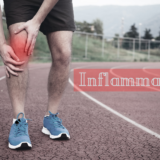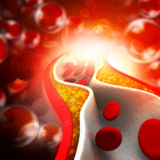HIIT is the Best Workout







High-Intensity Interval Training
Interval training combines short, high-intensity bursts of speed or intensity (from 10 seconds to three minutes) interspersed with slow recovery phases. The fast and slow intervals are repeated throughout the workout. Interval training can either be casual and unstructured or specific and structured.
Modern life has a way of making us feel time-crunched and pressured to find the most efficient ways of using the precious hours when we’re not sleeping. The trendy fitness regimen high-intensity interval training, or HIIT, epitomizes this feeling. While most people know that physical activity is healthy, a large part of the population worldwide doesn’t get enough. Unless you have a physically demanding job, a dedicated fitness routine is likely your best bet for getting active. Unfortunately, many people feel that they don’t have enough time to exercise. HIIT promises the best workout in the least amount of time. HIIT could deliver the biggest health improvement for your exercise time.
Hard Work, Short Rests
High-intensity interval training (HIIT workouts) has the fitness industry buzzing because of its potential to torch maximum calories in a minimum amount of time. The essence of HIIT is “Hard-work, short-rests”. There are few variables that could help change the nature of your HIIT workout.
First and foremost are your work and rest duration’s. Working for 60 seconds and resting for 30 seconds is significantly different than working for 30 and resting for 60. The longer work periods are generally better for improving endurance and shorter work periods are better for power. The idea is to elevate your heart rate for a brief period, followed by resting for a given period
Next the intensity of the work periods also counts. With HIIT you need to be pushing hard to get the most benefit from it, and it’s also important to try and maintain a consistent level of effort across the work periods. That means it’s not just about going all-out, because you won’t be able to sustain it across the workout. HIIT is a broad term for workouts that involve short periods of intense exercise alternated with recovery periods.
The other variable is the type of rest you do – are you stopping completely or engaging in active recovery, like pedaling slowly on an exercise bike? The latter can help flush out lactic acid ahead of your next work period.
Lastly there’s total volume, as in how many intervals you do. It’s easy to start high on HIIT which ends up being of no real benefit because by the end of the workout you’re unable to maintain the intensity. As a rule, start with low volume and go as hard as possible. When it feels easy, add a round or two.
That’s just about it. There aren’t any hard and fast rules when it comes to HIIT in terms of the type of exercise you do. It can be done with body-weight moves, cycling, running or weights, just as long as you’re able to do it at a high intensity. That makes some disciplines more suitable than others.
One of the biggest advantages of HIIT is that you can get maximal health benefits in minimal time. HIIT is recommended because these types of workouts burn serious energy, which helps burn more fat and calories.
Frequency of HIIT
A typical HIIT session is about 20-45 minutes of working and resting. It is recommended to do two to three times a week, as long as you build in 24 hours of rest and recovery between sessions. And, if your goal is to work out four times per week, the recommendation will be two HIIT sessions and two resistance training sessions.
Despite how short the workout is, it can produce health benefits similar to twice as much moderate-intensity exercise. For example, a HIIT workout using a stationary exercise bike could consist of 30 seconds of cycling as fast as possible against high resistance, followed by several minutes of slow, easy cycling with low resistance.
This would be considered one “round” or “repetition” of HIIT, and you would typically complete 4 to 6 repetitions in one workout.
The specific amount of time you exercise and recover will vary based on the activity you choose and how intensely you are exercising.
Regardless of how it is implemented, high-intensity intervals should involve short periods of vigorous exercise that make your heart rate speed up. Keep your programming in mind: If you do leg-intensive resistance training one day, then do HIIT sprints the next, your legs will be sore and not fully recovered for the HIIT. Try to schedule a rest day or yoga in between to allow optimal results.
Advantages of HIIT
There is no equipment necessary and you can do it anywhere
Some HIIT routines do use things like treadmills; but most HIIT workouts rely only on the body alone. Some of the most popular HIIT workouts are simple jumping jacks and sprints. So, unlike the gym, all you need is a little bit of space. Running, biking, jump roping, High knees, fast feet, or anything plyometric like jumping lunges work just as well to get your heart rate up fast and reap the benefits of HIIT. You can perform a HIIT workout anywhere at any time, adding to the convenience of this type of training. You can sneak in a workout in the morning, lunch, or evening that fits entirely around your schedule, but you don’t need any equipment to get it done. In fact, some equipment like dumbbells can make HIIT less effective because you want the focus to be on pushing your heart to its max, not your biceps. When you go into a gym you notice all the strange machines and devices. Some are so complicated that you need to be trained on how to use. Almost all are so expensive that that it is impossible to do the same workouts when at home or away from the gym. A great number of workouts are built around some of these machines. Although you can use equipment during a HIIT session, you don’t need any for a sweaty workout.
HIIT Can Improve Oxygen Consumption
Maximal oxygen uptake is our ability to take in oxygen and get it to our working muscles, and for our working muscles to extract the oxygen and use it to make energy. HIIT sets us up to be able to sustain higher intensities for longer durations as we train because we are improving our ability to use oxygen efficiently. Traditionally, this consists of long sessions of continuous running or cycling at a steady rate and it appears that HIIT can produce the same benefits in a shorter amount of time. High-intensity interval training can improve oxygen consumption as much as traditional endurance training, even if you only exercise about half as long.
Have a Healthier Heart
HIIT can help improve heart health in people with good health, as well as in those with cardiovascular conditions. It may also help improve measures of metabolic health, including blood pressure, blood sugar levels, and cholesterol.
HIIT workout produces cardiovascular and metabolic benefits that were similar to those of moderate intensity workouts. The majority of people aren’t used to pushing themselves into the anaerobic zone; that feeling where it feels like you can’t breathe and you might collapse on the floor. Studies on interval training report the most significant heart health benefits. Improving your heart health has a ton of benefits and can reduce the risk of developing problems like heart disease. HIIT increases the flexibility and elasticity of arteries and veins better than continuous aerobic exercise, because HIIT increases pressure demand on your blood vessels; they actually get a workout as well. In fact, high-intensity interval training is not only safe, but also easier to tolerate than a more moderate workout in people with coronary artery disease. HIIT can reduce blood pressure and heart rate, primarily in overweight or obese individuals with high blood pressure.
HIIT can help you lose fat
High-intensity intervals can produce similar fat loss to traditional endurance exercise, even with a much smaller time commitment. They can also reduce unhealthy visceral fat. In addition to helping with fat loss, HIIT could help increase muscle mass. It’s important to note that increases in muscle mass are more likely to occur in individuals who were less active to begin with. If you are not very active, you may gain some muscle by starting HIIT but not as much as if you performed weight training. However, like other forms of exercise, HIIT may be most effective for fat loss in those who are overweight or obese. HIIT workouts are actually better at building and maintaining muscle mass, while losing fat than regular sustained steady-state workouts as prolonged exercise can result in muscle being burned up and used by the body as fuel
Blood Sugar Can Be Reduced by HIIT
HIIT can reduce blood sugar levels and it also improves insulin resistance more than traditional continuous exercise. High-intensity interval training may be especially beneficial for those needing to reduce blood sugar and insulin resistance. Glucose metabolism and insulin sensitivity can be improved after both the high-intensity training and the moderate intensity continuous training
With HIIT you will Increase Your Metabolism
Due to the intensity of the workout, HIIT can elevate your metabolism for hours after exercise. These results in additional calories being burned even after you have finished exercising. HIIT helps to burn calories after exercising by keeping your metabolic rate raised after you’ve finished your session. Due to the sheer intensity of HIIT workout, your body can burn additional calories as you get on with your day. As well as increased fat-burning, HIIT stimulates the production of human growth hormone (HGH) by up to 450% in the hours after your workout. HGH is responsible for increasing your caloric burn and slowing down the aging process.
Improve mental health
HIIT can provide a range of benefits for people with mental illnesses, including reducing the severity of depression. Although all exercise may benefit mental health, HIIT training may be especially helpful.
Many people with psychiatric conditions have low motivation to exercise and feel that exercise is too time consuming. Short HIIT workouts could help overcome difficulties with motivation and finding time to exercise. HIIT can help reduce levels of depression and social avoidance.
Some of the HIIT exercises
- Jumping Jacks
- Wall sit
- Push-ups
- Crunches
- High knees
- Plank Jacks
- Burpees
- Side plank walks
- Jumping lunges
- Mountain climbers
- Jump squats
- Side lunges
- Saw plank
- Butt kick
- Dumbbell squats
- Side squats
- Toe touch
- Walking lunge
- Arm circle
- Trunk twist
- Side bend
- Pop squat
- Skater squat













